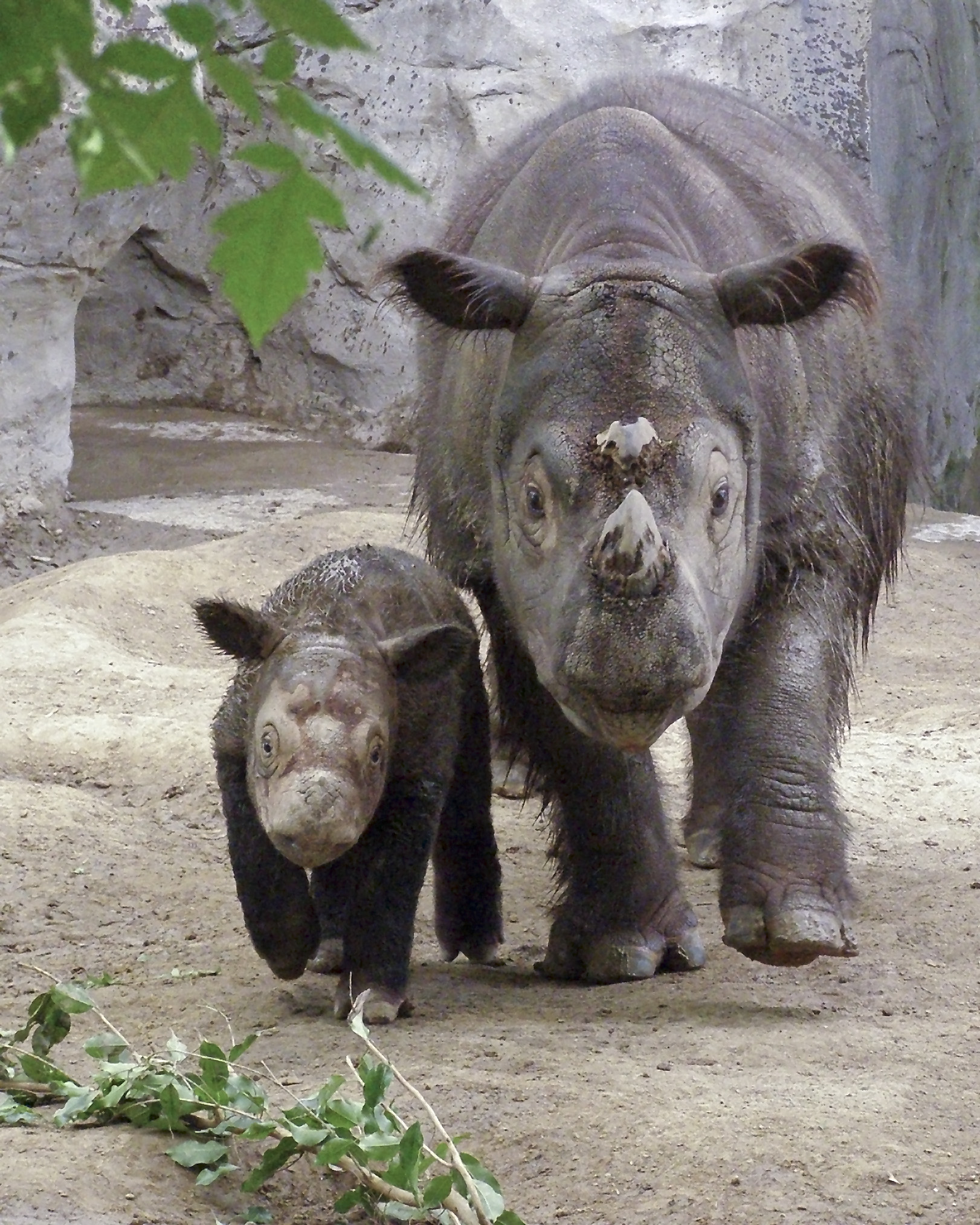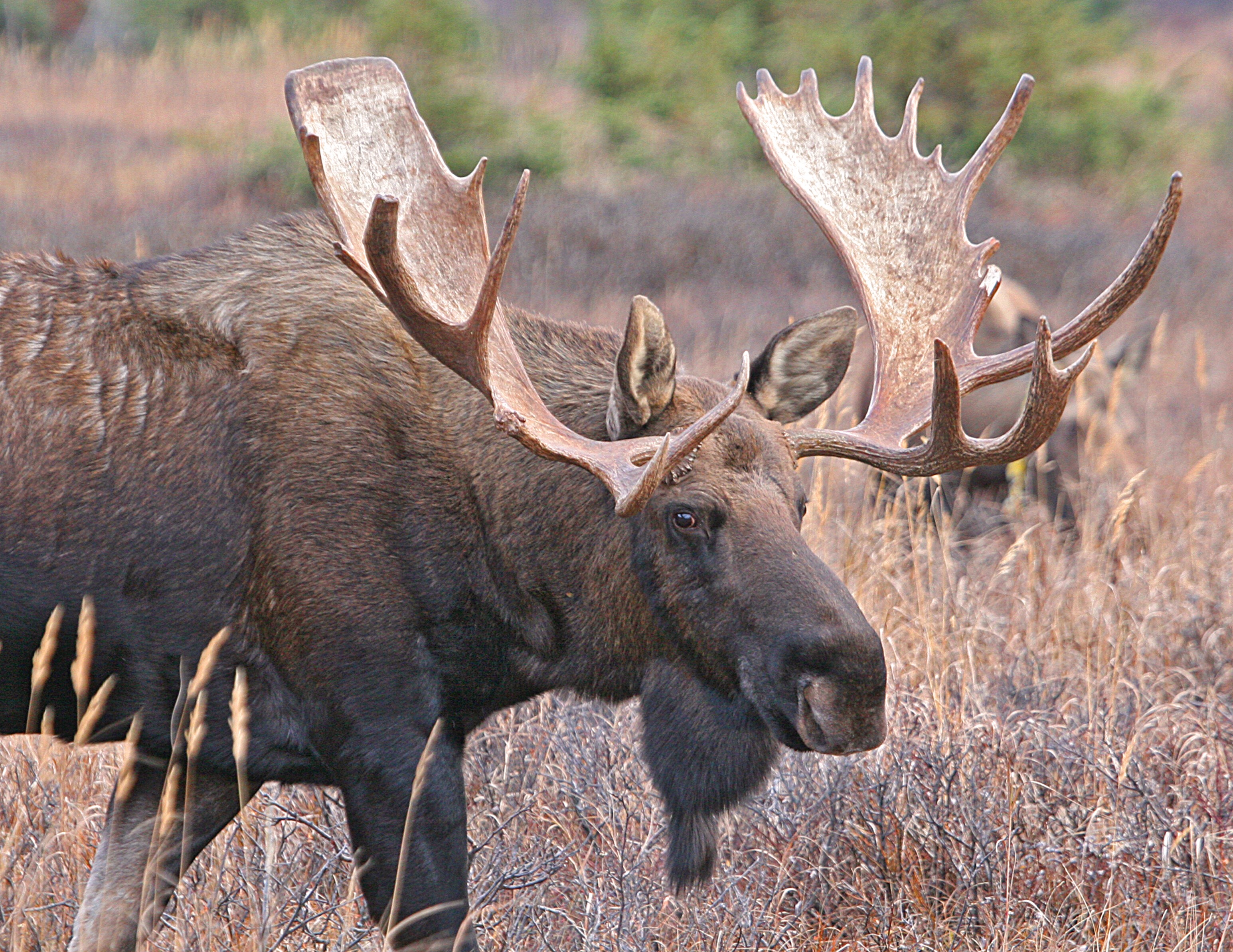Post by rock on Oct 3, 2019 5:40:31 GMT 5
Sumatran Rhinoceros - Dicerorhinus sumatrensis
The Sumatran rhinoceros, also known as the hairy rhinoceros or Asian two-horned rhinoceros (Dicerorhinus sumatrensis), is a rare member of the family Rhinocerotidae and one of five extant species of rhinoceros. It is the only extant species of the genus Dicerorhinus. It is the smallest rhinoceros, although it is still a large mammal; it stands 112–145 cm (3.67–4.76 ft) high at the shoulder, with a head-and-body length of 2.36–3.18 m (7.7–10.4 ft) and a tail of 35–70 cm (14–28 in). The weight is reported to range from 500 to 1,000 kg (1,100 to 2,200 lb), averaging 700–800 kg (1,540–1,760 lb), although there is a single record of a 2,000 kg (4,410 lb) specimen. Like both African species, it has two horns; the larger is the nasal horn, typically 15–25 cm (5.9–9.8 in), while the other horn is typically a stub. A coat of reddish-brown hair covers most of the Sumatran rhino's body.

Alaskan Moose - Alces alces gigas
The Alaska moose (Alces alces gigas) or giant moose or Alaskan moose is a subspecies of moose that ranges from Alaska to western Yukon. The Alaska moose is the largest North American subspecies of moose. Alaska moose inhabit boreal forests and mixed deciduous forests throughout most of Alaska and most of Western Yukon. Like all moose species, the Alaska moose is usually solitary but sometimes will form small herds. Typically, they only come into contact with other moose for mating or competition for mates. During mating season, in autumn and winter, male Alaska moose become very aggressive and prone to attacking when startled. Male Alaska moose can stand over 2.1 m (6.9 ft) at the shoulder, and weigh over 634.5 kg (1,399 lb). The antlers on average have a span of 1.8 m (5.9 ft). Female Alaska moose stand on average 1.8 m (5.9 ft) at the shoulder and can weigh close to 478 kg (1,054 lb). The largest Alaska moose was shot in western Yukon in September 1897; it weighed 820 kg (1,808 lb), and was 2.33 m (7.6 ft) tall at the shoulder. Alaska moose with the Chukotka moose, matches the extinct Irish elk as the largest deer of all time.

Credit to Wikipedia
The Sumatran rhinoceros, also known as the hairy rhinoceros or Asian two-horned rhinoceros (Dicerorhinus sumatrensis), is a rare member of the family Rhinocerotidae and one of five extant species of rhinoceros. It is the only extant species of the genus Dicerorhinus. It is the smallest rhinoceros, although it is still a large mammal; it stands 112–145 cm (3.67–4.76 ft) high at the shoulder, with a head-and-body length of 2.36–3.18 m (7.7–10.4 ft) and a tail of 35–70 cm (14–28 in). The weight is reported to range from 500 to 1,000 kg (1,100 to 2,200 lb), averaging 700–800 kg (1,540–1,760 lb), although there is a single record of a 2,000 kg (4,410 lb) specimen. Like both African species, it has two horns; the larger is the nasal horn, typically 15–25 cm (5.9–9.8 in), while the other horn is typically a stub. A coat of reddish-brown hair covers most of the Sumatran rhino's body.

Alaskan Moose - Alces alces gigas
The Alaska moose (Alces alces gigas) or giant moose or Alaskan moose is a subspecies of moose that ranges from Alaska to western Yukon. The Alaska moose is the largest North American subspecies of moose. Alaska moose inhabit boreal forests and mixed deciduous forests throughout most of Alaska and most of Western Yukon. Like all moose species, the Alaska moose is usually solitary but sometimes will form small herds. Typically, they only come into contact with other moose for mating or competition for mates. During mating season, in autumn and winter, male Alaska moose become very aggressive and prone to attacking when startled. Male Alaska moose can stand over 2.1 m (6.9 ft) at the shoulder, and weigh over 634.5 kg (1,399 lb). The antlers on average have a span of 1.8 m (5.9 ft). Female Alaska moose stand on average 1.8 m (5.9 ft) at the shoulder and can weigh close to 478 kg (1,054 lb). The largest Alaska moose was shot in western Yukon in September 1897; it weighed 820 kg (1,808 lb), and was 2.33 m (7.6 ft) tall at the shoulder. Alaska moose with the Chukotka moose, matches the extinct Irish elk as the largest deer of all time.

Credit to Wikipedia







